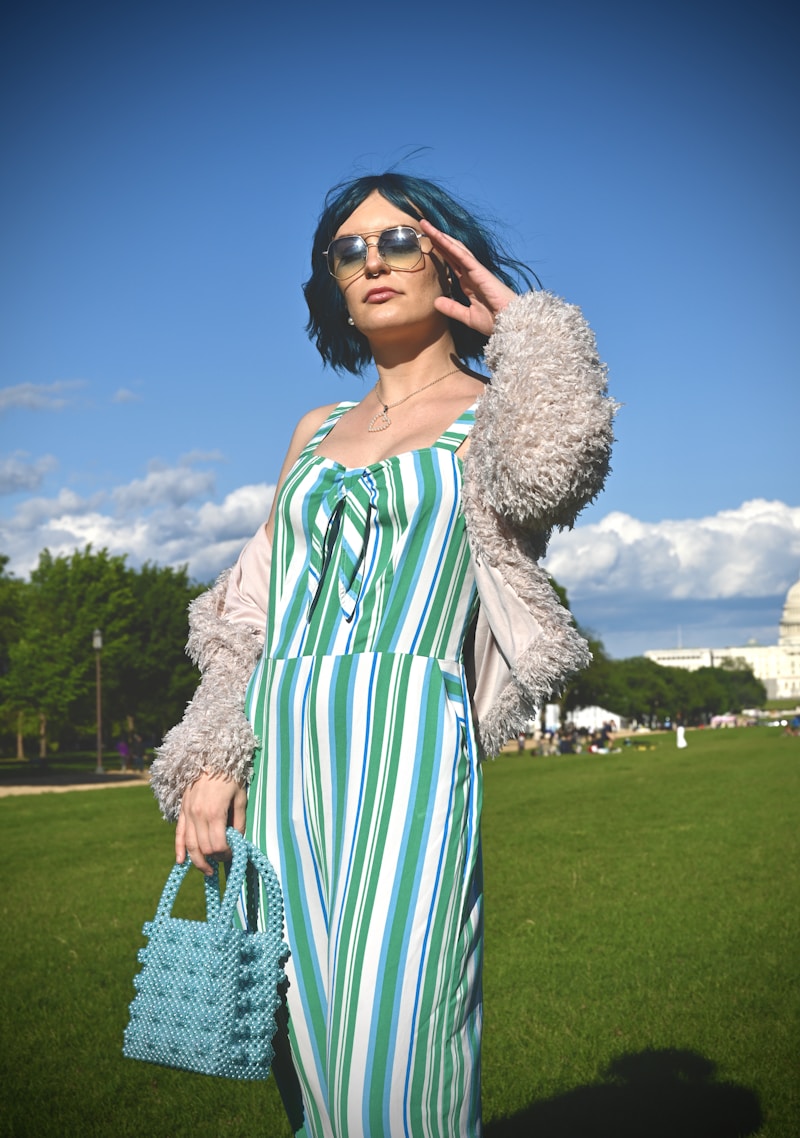Exploring Unconventional Lengths in Dresses: A Fashion Revolution
In the world of fashion, one of the most exciting trends is the emergence of unconventional lengths in dresses. These styles defy traditional norms and offer a fresh perspective on how dresses can be worn for various occasions. From ultra-short mini dresses to dramatic floor-length gowns, designers are experimenting with length to create unique styles that cater to diverse body types and personal preferences. This article will explore the various unconventional lengths in dresses, their historical significance, current trends, and tips on how to incorporate them into your wardrobe.
What Are Unconventional Dress Lengths?
Unconventional dress lengths challenge what is typically expected in terms of hemline. Traditionally, dresses have been categorized into three main length categories: mini, midi, and maxi. However, the fashion industry has seen a surge of styles that fall outside of these classifications. Unconventional lengths include asymmetrical hemlines, high-low cuts, and even dresses that combine different lengths in one design.
Historical Context of Dress Lengths
To understand the rise of unconventional lengths, it is essential to look at the history of women's fashion. In the 1920s, dresses became shorter as flapper styles emerged, reflecting a shift in societal norms. The 1960s continued this trend with the introduction of the mini skirt, while maxi dresses dominated the 1970s. Each era pushed the boundaries of women’s attire, allowing for personal expression beyond traditional gender expectations.
The Modern Era of Unconventional Lengths
In recent years, fashion designers have increasingly embraced diverse body shapes and sizes, leading to the exploration of unconventional lengths. Many dresses now mix traditional silhouettes with unexpected cuts, drawing the eyes of fashion lovers worldwide. These styles not only flatter various body types but also serve as a bold statement piece that can transform an entire look.
| Style | Description | Occasions |
| High-Low Hem | Shorter in the front and longer at the back, this style allows for movement and drama. | Weddings, parties |
| Asymmetrical Hemlines | Uneven hemlines that create a unique silhouette and add visual interest. | Casual outings, fashion events |
| Layered Lengths | Dresses with multiple layers of varying lengths for added texture and style. | Fashion shows, artistic performances |
| Midaxi | A length that falls between midi and maxi, offering a fresh take on the conventional. | Everyday wear, office |
How to Style Unconventional Lengths
Incorporating unconventional lengths into your wardrobe does not have to be intimidating. Here are some styling tips to help you wear unconventional dresses with confidence:
1. Accessorize Wisely
Accessories can make or break an outfit, especially when working with unconventional lengths. For a high-low dress, consider wearing strappy heels or ankle boots to elongate your legs and create balance. On the other hand, pairing an asymmetrical hemline with bold statement jewelry can elevate your look and draw attention to the unique style of the dress.
2. Consider Your Body Type
Unconventional lengths can flatter various body types when styled appropriately. For instance, if you’re petite, opt for shorter dresses or those with vertical lines to elongate your appearance. If you’re curvier, consider layering pieces or styles with structured designs to create a balanced silhouette.
3. Choose the Right Fabric
The fabric of a dress significantly affects how it falls and flows. Lighter materials like chiffon or silk can beautifully accentuate layered cuts, while heavier fabrics can provide structure for dressier occasions. Therefore, select fabrics that complement the unconventional length you choose to wear.

Embracing Colors and Patterns
Unconventional lengths are an opportunity for self-expression, and what better way to express yourself than through color and patterns? Playful prints, bold colors, or even monochromatic schemes can turn a simple dress into a statement piece. Consider experimenting with:
- Florals: Great for spring and summer, floral prints can add a touch of femininity to any length.
- Stripes: Vertical or diagonal stripes can create a visually elongating effect, especially in asymmetrical designs.
- Solid Colors: A dress in a solid, bold color can speak volumes and highlight the unique cutting of the dress.
Unconventional Lengths Across Cultures
Globally, dresses and styles vary significantly, influenced by culture and tradition. In many Asian cultures, long traditional dresses like the Ao Dai and Kimono showcase intricate designs while paying homage to heritage. Similarly, in Western cultures, the emergence of bohemian and tribal-inspired dresses reflects the fusion of different cultural influences, each with its own take on length and style.
Final Thoughts on Unconventional Lengths in Dresses
As fashion continues to evolve, unconventional lengths in dresses provide an exciting avenue for creativity and personal expression. They encourage individuals to step out of their comfort zones and embrace their unique styles. By understanding historical contexts, styling tips, and cultural significance, anyone can confidently incorporate these dresses into their wardrobe.
Whether you favor high-low styles, asymmetrical cuts, or layered lengths, the fashion world is your canvas. Remember, the key to mastering unconventional lengths is confidence and creativity. Don’t shy away from experimenting with different looks, and most importantly, wear what makes you feel fabulous!
So, dive into the world of unconventional lengths in dresses, and let your wardrobe reflect your personality in the most stunning ways possible!